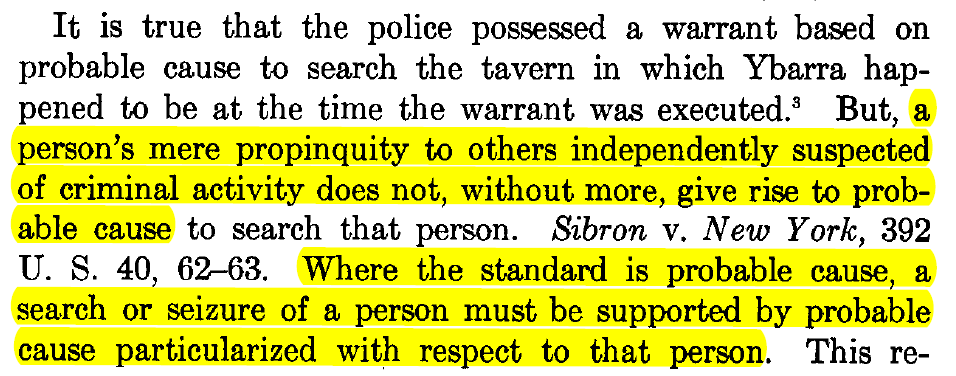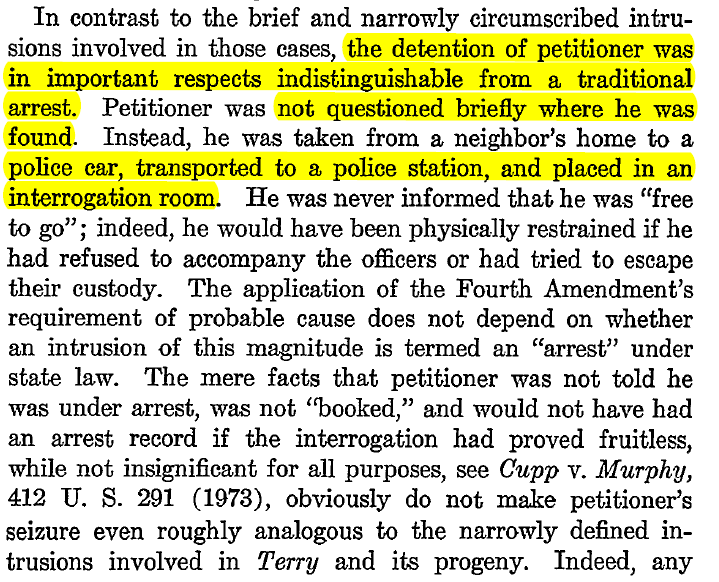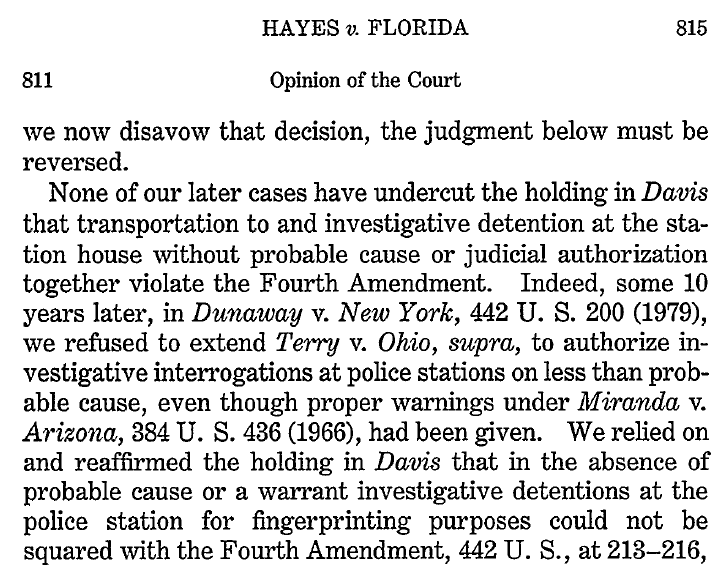But... he doesn’t seem to know it.
That is a BIG PROBLEM. Let’s unpack this. It’s important.
(thread)
It doesn’t matter.
The police do not have probable cause to arrest you just because you are standing near someone else who may have committed a crime.
According to Cline, the agents grabbed the man because they saw *other* people coming toward them and felt unsafe.
As far as the Fourth Amendments goes, there's two important points here:
This is one of those bar exam types of cases where they ask you “Was this an arrest? (A) Yes (B) No.”
That is an arrest. Period.
It's when he says that this "simple engagement" was perfectly constitutional because "it's not a custodial arrest."
In violation of the Fourth Amendment.
Like they unquestionably did here.






